Searching for Cyrus: Part I
In chapter one of this series on Iranian nationalism we find traces of ancient Persia in the fish tanks of Tehran.
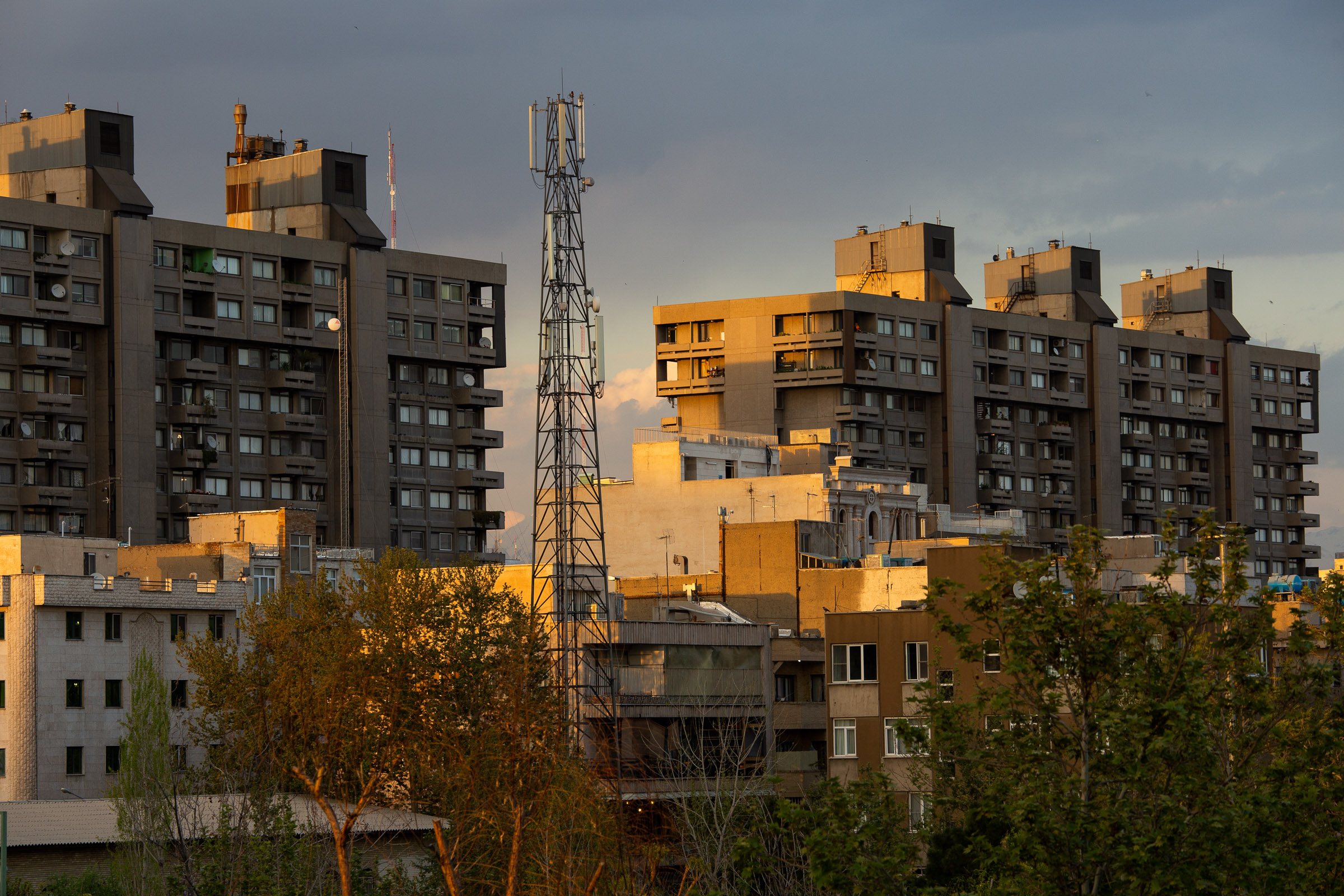
When I travelled to Iran back in 2019 the main question I wanted to answer was ‘how does the Islamic Republic relate to Iran’s ancient history?’. Are they like the Saudis – who have bulldozed most of their pre-Islamic archeological sites and dismiss the era before Muhammad as the ‘age of ignorance’? Or are the Iranian authorities more like the Egyptians – who still promote the ancient spring festival and proudly insist that they belong to a civilisation seven thousand years in the making? Plenty has been written on Iranian conceptions of nationalism and I could have read up on this topic before I visited the country but my approach has always been to look first and read later. This is not a high-minded attempt to reserve judgement. I just tend to need a bit of first hand experience before my curiosity kicks in.
I travelled with my wife Amy and two friends from Melbourne. Matt, a very tall economist from Boston, and Claire, a not very tall psychologist from Cape Town. Our itinerary was fairly loose. We planned to fly into Tehran, spend a few days exploring the city before traveling south to the city of Shiraz. From there we set aside a day to visit the ancient ruins of Persepolis – Iran’s most popular tourist destination. After that we sketched out a route that would take us to a few of Iran’s western cities like Isfahan and the desert city of Yazd. At that point Claire and Matt would return to Tehran to fly out to begin their bike-packing trip while Amy and I would continue on through western Iran and on to Armenia.
Our flight to Tehran originated in Baku – the capital of neighbouring Azerbaijan. Baku turned out to be a flashy petro-state metropolis with a lot of new skyscrapers and fancy restaurants surrounded by kilometres of squalid refineries and pump-jacks. Thus our flight was mainly comprised of well-heeled Iranians with designer accessories and impeccable makeup. The first indication that Iran maintained some sort of connection with its ancient history became apparent at Baku airport where a handful of passenger jets belonging to Iran’s national airline were awaiting departure. Both the logo and the name of Iran’s national carrier reference a mythical bird-like creature known as the Homa. Following the revolution the offical flag of Iran was redesigned – removing the sabre-wielding lion at its centre and replacing it with a stylised rendering of the word ‘Allah’ in Arabic. The Homa, however, survived the revolution intact and Iran’s ageing fleet of airliners still display the classic Griffin livery.
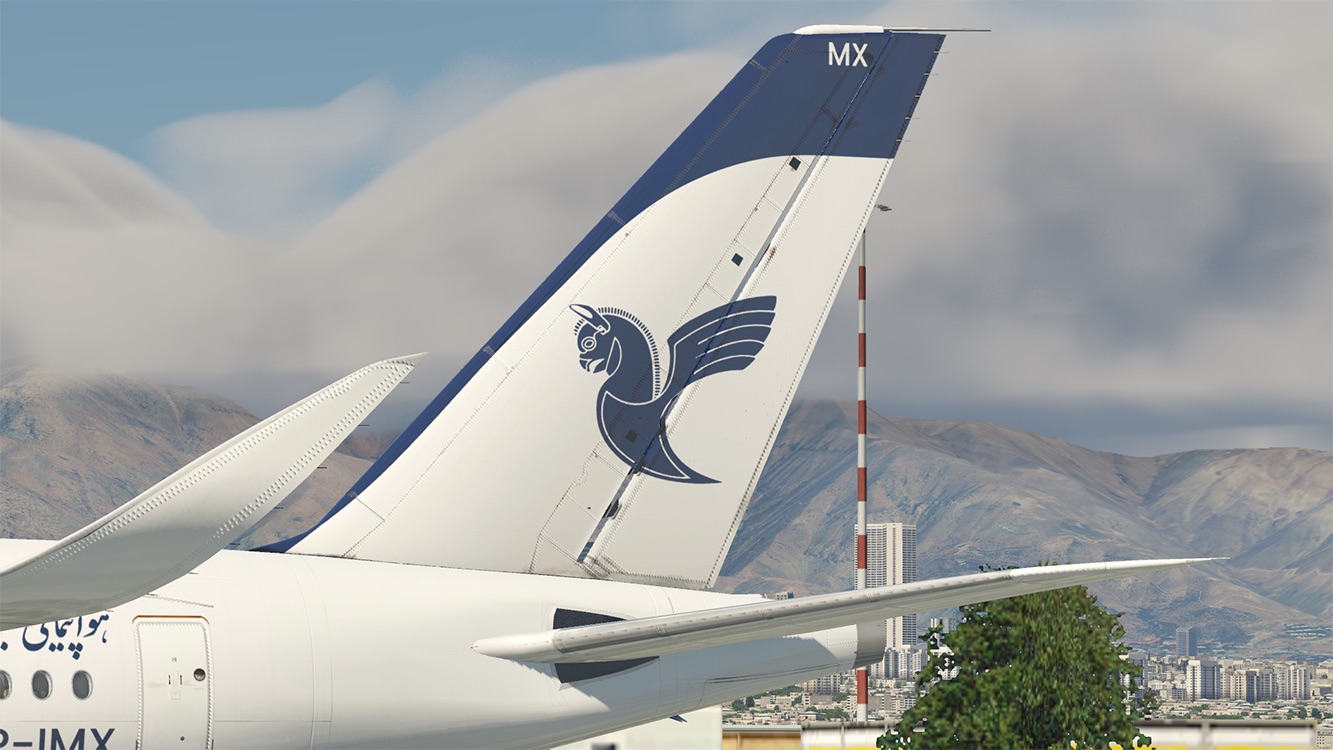
I couldn’t see much from the window of our plane as we flew into Tehran because most of the northern coastline of the country was blanketed in cloud. Howver I did catch a glimpse of one perfectly conical volcano (presumably Mt Damavand) sticking up through clouds. As we taxied to the terminal of Imam Khomeini International Airport the flight attendant announced the local time – foregoing the old joke about setting your watch back one hundred years. Most of the female passengers waited until the last minute to don their headscarfs and a young Swiss woman, who turned out to be a regular visitor to Tehran, showed Claire and Amy exactly how much of their fringe they could reveal under their headscarfs without getting into trouble. As far as I could gather the risk you run as a woman in Iran is dependent on a number of different factors. There’s undoubtedly different rules for rich vs poor, urban vs rural, for Persians vs Azeris vs Kurds and, of course, for locals vs foreigners. As we discovered later, there appear to be no rules at all for Chinese tourists.
The actual city of Tehran (or at least the part we’d found ourselves in) was much more scenic and much more affluent than Hollywood depictions of the country would suggest. This halo effect is partly due to geography. Looming over the city to the north are the snow-capped peaks of Mount Tochal which offer a very majestic backdrop to all the mid-rise office towers and apartments. The suburbs of Tehran themselves revealed a wide range of architectural styles – ranging from ugly pre-fab concrete tenements to gorgeous mozaic-like brick apartment buildings. Residential architecture in Tehran has undergone a bit of a renaissance over the last few years – especially when it comes to creative uses of brickwork.
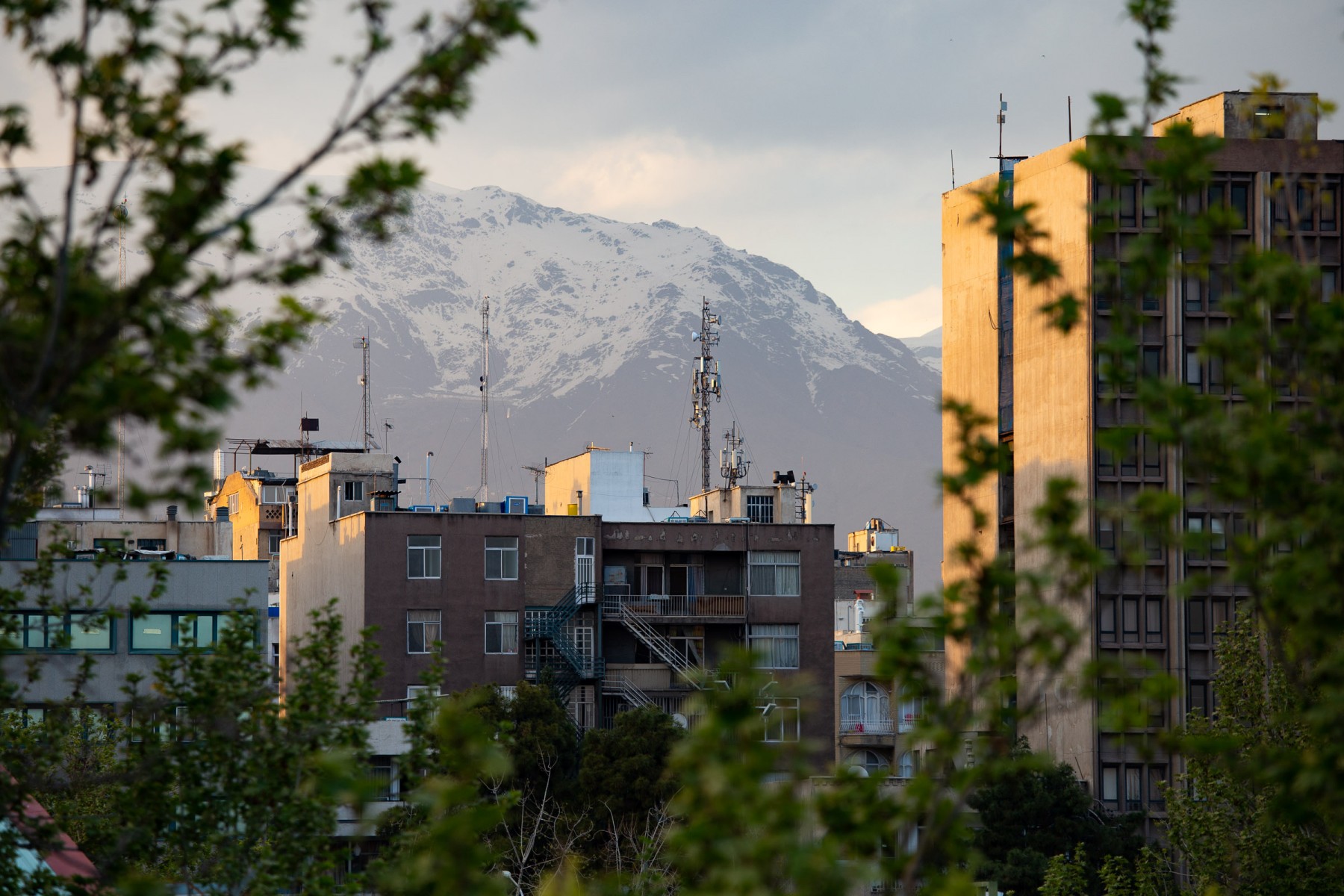
Commerce also appeared to be thriving. Despite decades of heavy U.S.-led sanctions there didn’t appear to be any shortage of consumer goods available in Tehran’s shopping malls and outlets. I’d assumed that Tehran’s shops would be dominated by somewhat shoddy local goods and Chinese imports but, as far as I could tell, the Iranian capital offered basically all the same brands and products as any other major city. Clearly the effect of sanctions was uneven at best. My sense was that, as long as you were wealthy enough, you could furnish your apartment in Tehran with all the same gadgets and appliances as someone living in London or New York. Working class Iranians were much more reliant on locally produced cars and household appliances but these seemed to be reasonably good quality. Later on in our trip we met a cafe owner who proudly pointed out that pretty much all the appliances in his shop were domestically produced. “Persia, Persia, Persia” he said pointing at the radiator, the drinks fridge and the TV. “Soon” he told us “we will make aeroplanes”. Until then the Iranian aviation industry continues to rely on its ageing fleet of commercial aircraft. Likewise the Iranian Air Force has somehow managed to maintain a handful of the iconic swing-wing F-14 ‘Tomcats’ (of Top Gun fame) which were sold to the Shah in the 1970s.
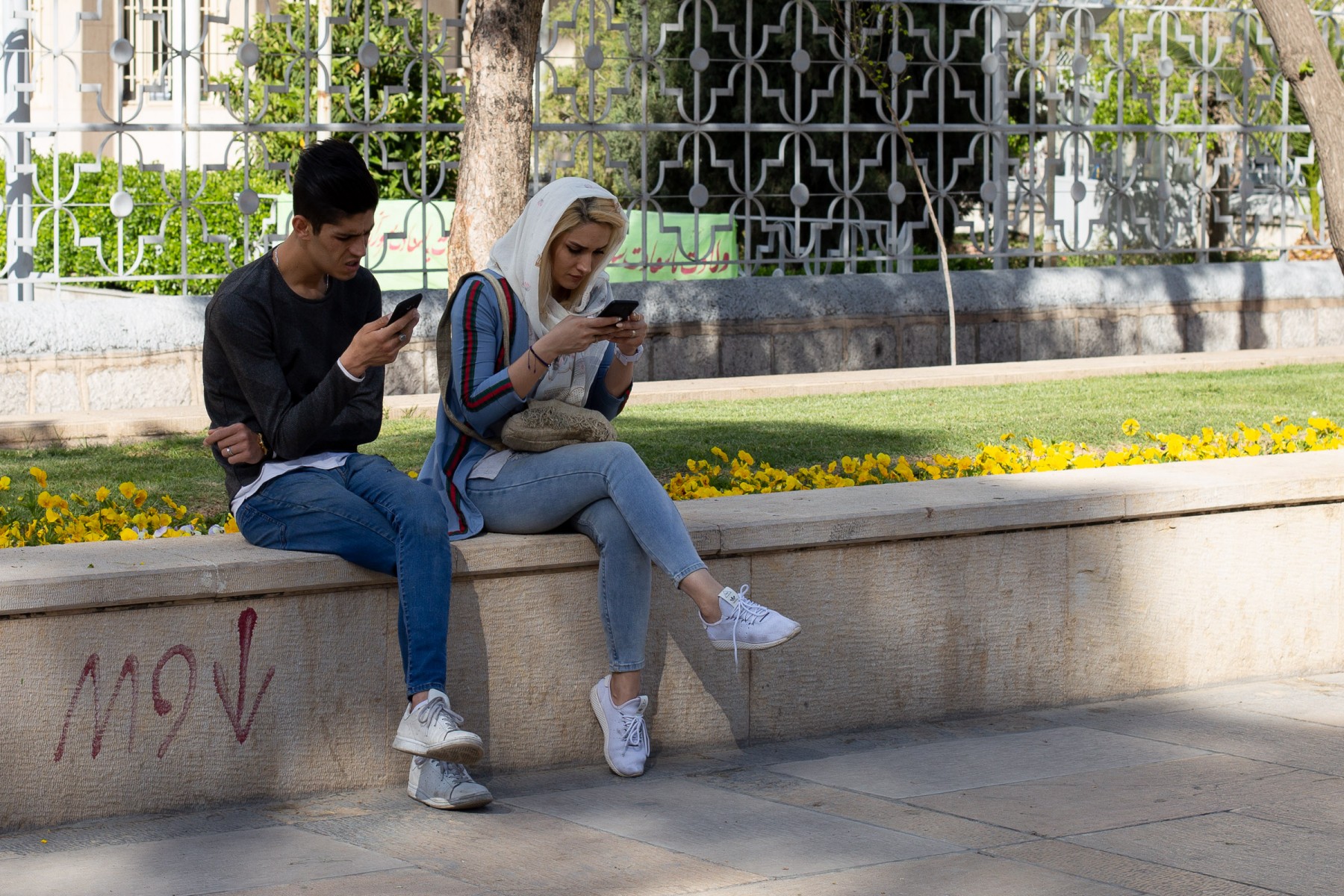
While most household goods in Iran are locally produced beauty standards appear to have been liberally imported from the West – as evidenced by the high number of young Iranian women walking around with the tell-tale signs of a fresh nose job. This demand for cosmetic surgery is a bit of recent trend1. In the early days of the revolution women found wearing makeup in public were subject to arrest by Iran’s Morality Police. Those who protested the new mandatory hijab laws were fined or arrested and sometimes even caned. Nowadays the horse has definitely bolted when it comes to the strict enforcement of the hijab. Most women in Tehran wear makeup and young women show as much of their hair as they can get away with while still adhering to the dress code. My favourite example of this letter-of-the-law approach were the women wearing headscarfs that were photo-printed to match their natural hair colour.
From what I could tell the most obvious effect of the decades-long sanctions regime imposed by the U.S. was the nullification of international copyright and intellectual property laws. Without the threat of litigation Iranians have developed a whole parallel software and banking ecosystem that borrows functionality from the most popular apps available elsewhere. Denied access to Apple’s App Store Iranians rely on Sib (farsi for ‘apple’) to find and download iOS apps while Cafe Bazaar offers a local marketplace for Android apps. Aparat offers Iranians an alternative to YouTube while the taxi hailing apps like Snapp and Tapsi stand in for services like Uber and Lyft.
One of the few areas where Iran’s web and the wider web overlap is on Instagram – which the Iranian government reluctantly allows its citizens to access. This longstanding exemption (which has been revoked on numerous occasions) means that a disproportionately large share of social media activity in Iran now takes place on Instagram. This creates a bit of dilemma for the regime because, during periods of heightened unrest, the government has a habit of blocking Instagram to prevent people from using it to organise protests. But this heavy-handed approach to censorship risks disrupting day-to-day commerce because a lot of businesses rely on their IG profiles and the app’s built-in messaging service in lieu of a dedicated website. In fact a large number of shops and businesses within Iran advertise their instagram handles before their phone numbers.
Being a tourist in Iran presents certain unique challenges. To start with you have to gamble on getting approved for a visa when you arrive. In our case Iranian officials not only approved our tourist visas but very graciously opted not to stamp our passports – as transit stamps from Iran put you in hot water with U.S. and Israeli customs officials. Iran encourages tourism from all over the world but citizens of some countries are obviously less welcome than others. Americans, in particular, are treated as somewhat suspect and are required to be chaperoned by official guides if they want to visit the country. Secondly, women who visit Iran have to submit to the Islamic Republic’s sharia-inspired dress code – which demands ‘modest’ clothing – including the hijab (headscarf) – be worn in all public places. Lastly, tourists have to bring enough hard currency with them to last the duration of their trip because, due to U.S. sanctions, Iran is excluded from the International SWIFT banking network – which is what allows travellers, under normal circumstances, to draw funds from their bank account when they’re overseas.
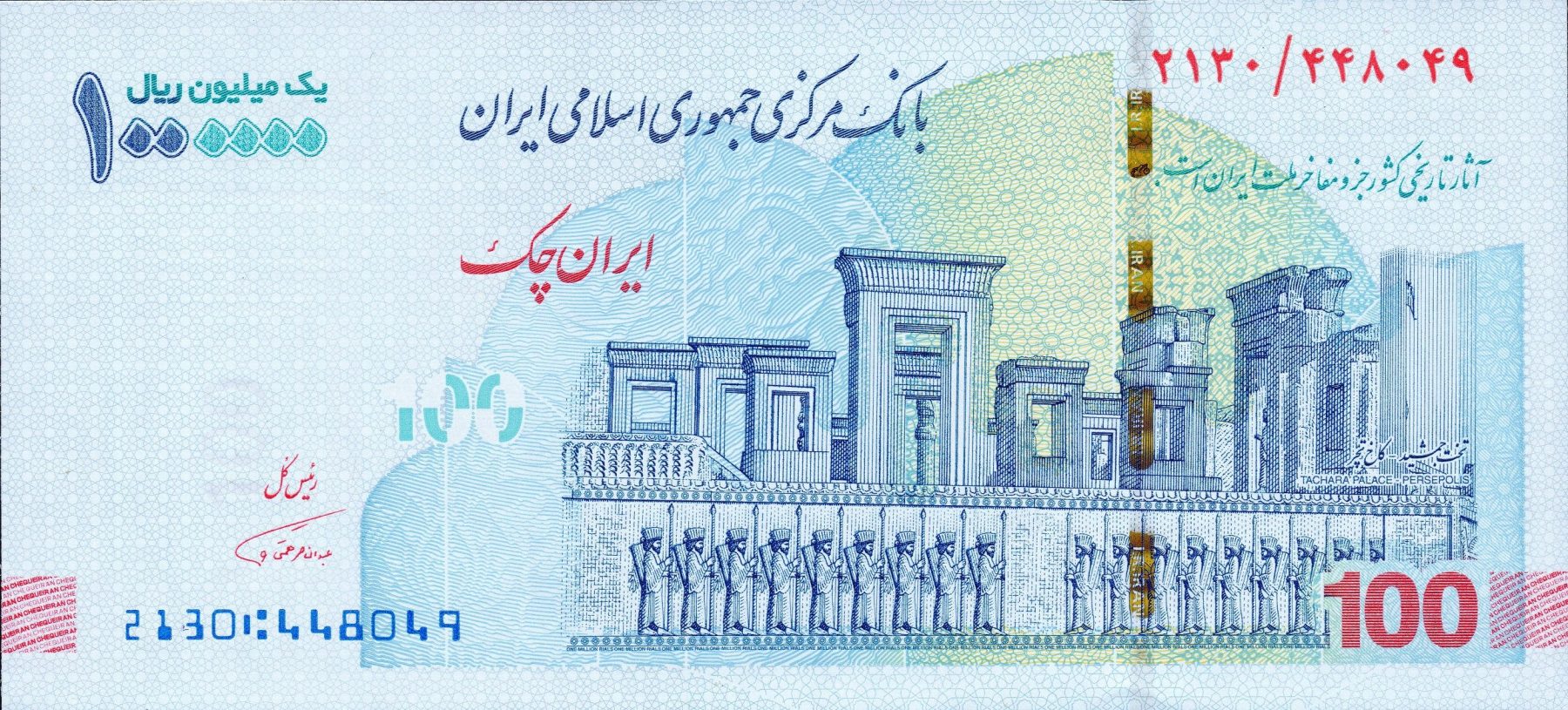
When we travelled to Iran in April 2019, money was a particular challenge because Iran’s central bank was in the process of re-denominating its currency. Years of economic isolation and political upheaval had reduced the value of the Iranian Rial to a fraction of its original face value and the standard set of bank notes had become impractical for day-to-day use. By that point a loaf of bread cost about 20,000 Iranian Rials (IRR) while something genuinely expensive, like the Iranian version of the standard 4-cylinder Peugeot 405, would set you back 780,000,000 IRR. To alleviate the problems associated with hyperinflation the Iranian government had begun transitioning from the Rial to the ‘Toman’ (with one Toman equalling 10,000 Rials). The issue for us tourists was that many restaurants and businesses in Tehran were still advertising their prices in Rial while others were listing their prices in Toman so we couldn’t always tell what meals or taxis actually cost. To further complicate matters, when we arrived in Tehran the Iranian currency was temporarily in free-fall. Donald Trump’s administration had just declared Iran’s Islamic Revolutionary Guard Corps (a branch of the military designed to coup-proof the regime) as a terrorist organisation. That announcement had tanked the Rial and thrown the exchange rates into disarray so we spent the first few hours in Tehran just trying working out what our cash was worth. Economic shocks like these are a minor inconvenience for tourists but they’re disastrous for regular Iranians who have, on numerous occasions, watched their purchasing power evaporate overnight.
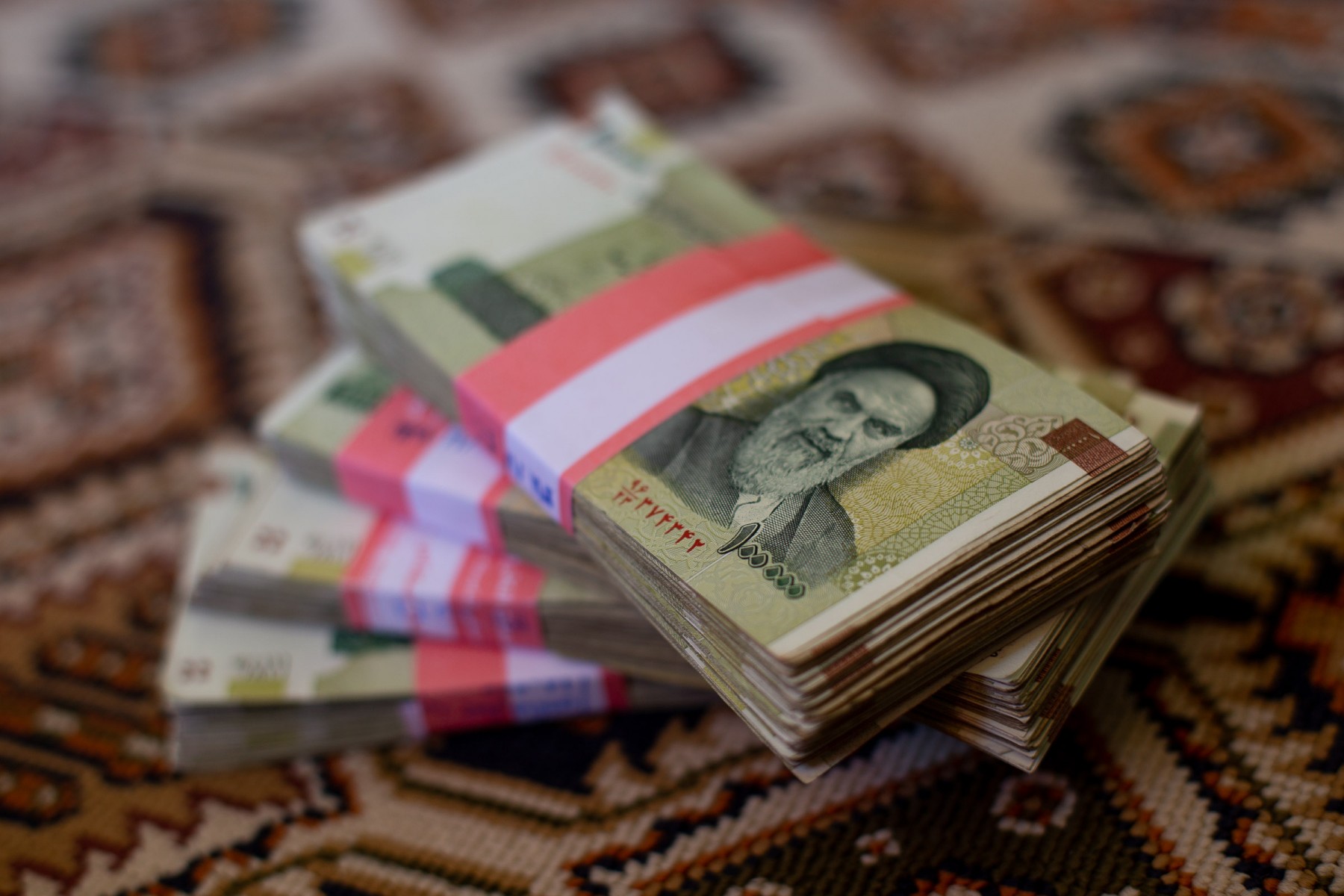
We did eventually mange to convert some of our U.S. Dollars into fat stacks of Iranian Rials and these banknotes provided my second clue as to how ancient Persia factored into the world view of the Islamic Republic. Most of the artwork on Iran’s paper money featured either important pilgrimage sites in Shia Islam, like the Imam Reza Shrine in Mashhad, or modern feats of engineering like the big hydroelectric dam in the mountains of Khuzestan. But occupying pride of place on the front of the million rial banknote were the ruins of the ancient city of Persepolis. Similar illustrations can be found within the pages of Iranian passports and several streets and one major shopping mall in Tehran are named after Cyrus the Great. Clearly the Islamic Republic is willing to acknowledge the faded glory of that former Empire.
There’s no doubt that the Achaemenid Empire, and its capital of Persepolis, loom large in the Iranian imagination – and it does so for good reason. The Achaemenid dynasty began with Cyrus the Great in 550 B.C. and lasted until it was overthrown by Alexander (the Not-So-Great) in 330 B.C. At its height, under Darius I, the Achaemenids controlled an area roughly five and a half million square kilometres – stretching from the Balkans and Egypt in the west to what is now Northern India in the east. It’s estimated that as many as 40% of the world’s population fell under the jursdiction of Persia’s ‘King of Kings’.
When I visited Iran my knowledge of the country’s ancient and medieval history was pretty thin. In the history books I was familiar with The Persians were always distant barbarian opponents to the Civilisations That Mattered. I knew about the Achaemenids because of their rivalry with the Ancient Greeks and I knew about the Sassanids because of their rivalry with the Romans. Iran’s subsequent Islamic history remained a mystery. Fast forward to the 20th century and I was on slightly firmer ground. Thanks to Chomsky and Pilger, I knew about the about the Anglo-U.S. coup that toppled Iran’s democratic government in 1953 and handed power to the Iranian monarchy. I knew about the Islamic Revolution of 1979 and the takeover of the U.S, embassy in Tehran by students of the revolution. I also knew about the abortive rescue mission launched by U.S. Special Forces that ultimately tanked Jimmy Carter’s re-election bid. Lastly I knew about Saddam’s invasion of Iran in 1980 which had kicked off a devastating eight-year war.
But despite having read a bit about Iran my mental image of the country itself was still filtered through Hollywood’s War on Terror propaganda. Alex Gansa’s series Homeland (2011) had used some of the rougher parts of Morocco to stand in for Tehran and the show’s writers depicted the city as a cramped and dusty hellscape infested with IRCG thugs commanded by a sadistic villain in league with Al Qaeda for some reason. Ben Affleck’s Argo – which was released to widespread critical acclaim the following year – was not much better. Affleck’s production team used a particularly gloomy part of Istanbul’s grand bazaar to represent the crowded streets of the Iranian capital and while its depiction of Tehran’s inhabitants was less cartoonishly racist than Homeland it wasn’t particularly sympathetic to the protest movement. The storyline focused on an elaborate CIA rescue operation but, aside from a brief prologue, the filmmakers didn’t make much effort to explain why Tehran’s youth were so hostile to the U.S. presence in the first place.
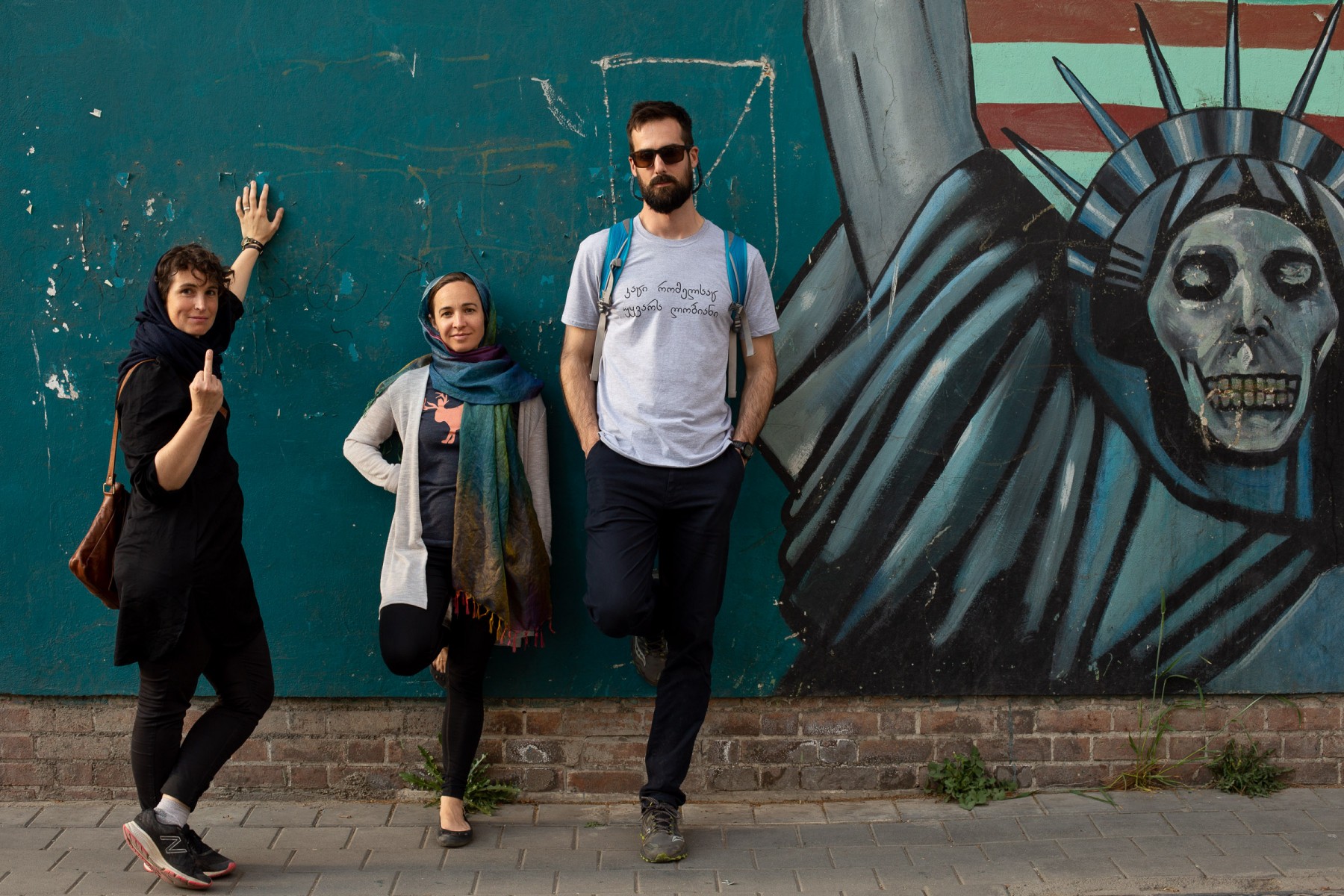
On day two in Tehran we found ourselves following in the footsteps of those radical students – right to the gates of the old U.S. embassy compound on Taleqani St. Following the Hostage Crisis of 1979 the building was turned into a museum and re-branded by the Iranian government as the ‘Den of Spies’ and although we didn’t venture into this wretched hive of scum and villainy we did take a walk around the property to check out the artwork. In the early days of the crisis Tehran’s more radical students covered the walls of the embassy compound in angry, anti-American murals. Some of those murals must have appeared rather dated so, in 2019, Iranian officials began replacing the original murals with stylish new versions. To my untrained eyes the new artwork seems to be a bit Shepherd-Fairy inspired – which seems fitting given that the longest period of rapprochement between the two nations occurred during the Obama Administration. But although the new designs have a more cohesive aesthetic they lack the makeshift charm of the originals.
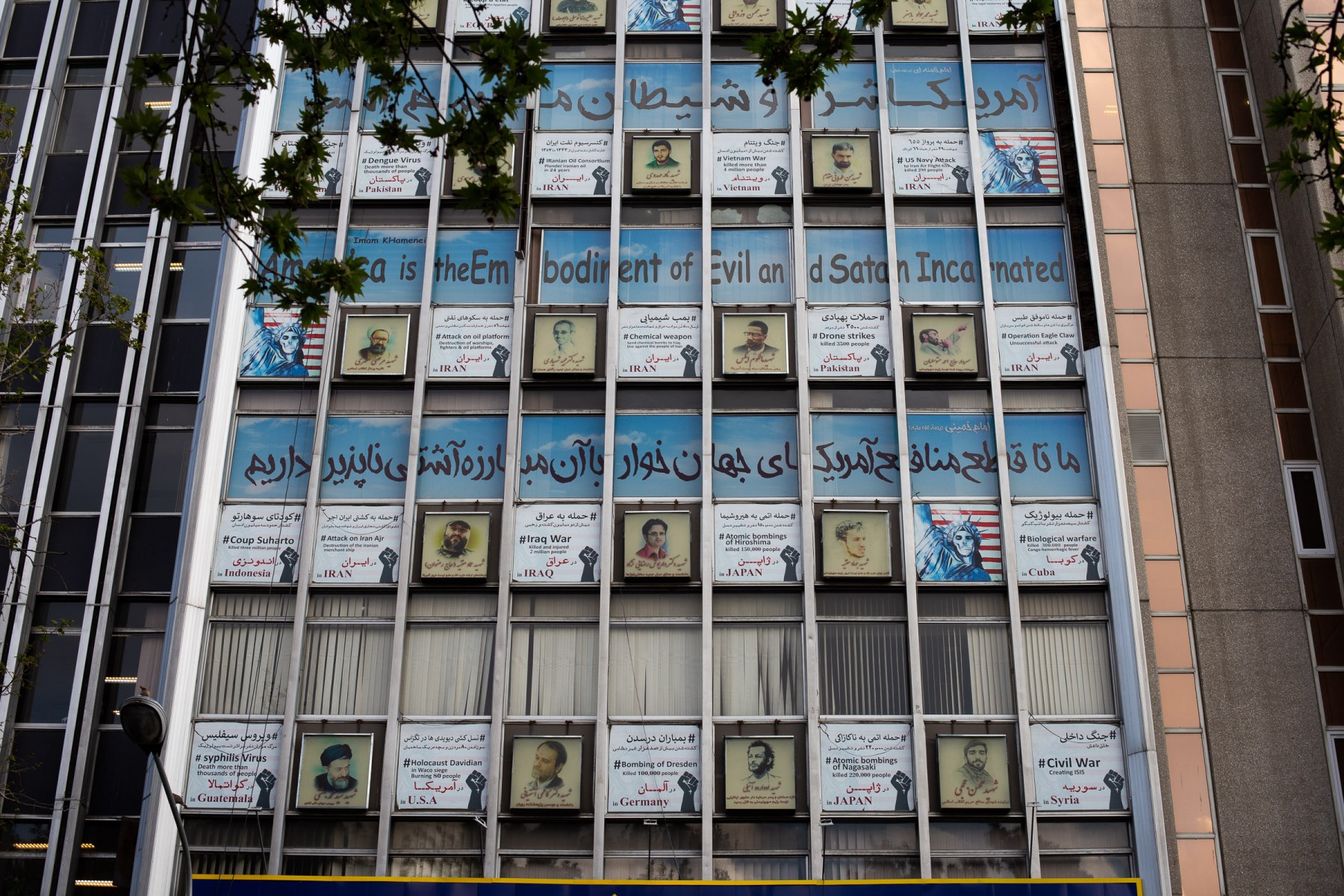
When we visited there were still remnants of the original anti-U.S. propaganda. Amy, Matt and Claire posed next to a ghoulish version of lady liberty2 representing the country that Khomeini called The Great Satan (as distinguished from the ‘Lesser Satan’ of the USSR) while the building across the street served as a sort of advent calendar of the U.S. government’s more egregious acts of foreign policy. Each atrocity was advertised on a banner in both English and Farsi. Some of these crimes (like the invasion of Vietnam) are incontestable. Others (like the claim that 100,000 people were killed in the bombing of Dresden) are exaggerated, and a few (like the claim that the U.S. government was responsible for outbreaks of Dengue fever in Pakistan) are more-or-less conspiracy theories. My favourite touch, however, was the line about America being ‘the Embodiment of Evil and Satan Incarnated’ which spanned the fifth floor and was printed in comic sans.
While Iran’s recent political history was fascinating I still wanted to know how the Islamic Republic handled their nation’s ancient history. Did they suppress information about pre-islamic Iran? Did they ban books about ancient Persia? Did they discourage archaeology and the study of ancient history? In many countries digging up the past can be surprisingly fraught. So why should Iran be any different? But after a short time spent in Tehran it became pretty apparent that, if the country’s religious authorities were trying to enforce an exclusively Islamic culture, they weren’t having much success because everywhere we went we came across signs of a much older religious tradition. As it happened we’d arrived at the tail end of a thirteen-day Persian festival known as Nowruz – a holiday celebrating the Spring Equinox. Widespread observance of Nowruz surprised me because Nowruz was originally a Zoroastrian festival – part of the ancient monotheistic religion founded by the prophet Zoroaster in the sixth century B.C.
In its current form Nowruz (literally ‘new day’) festivities typically involve bonfires, picnics, elaborate meals and symbolic displays known as the Haft-Sin. The Haft-Sin (lit ‘Seven S’s’) is a kind of still life comprised of objects and ingredients that begin with the Persian letter for ‘s’. While certain aspects of Nowruz can be traced back to the Achaemenid era the tradition of the haft-sin is a relatively new innovation – having been established during the reign of the Sassanids some time in the 5th century A.D.
In recent years there’s been a trend to include live goldfish in the Haft-Sin which are supposed to represent rebirth and renewal. Unfortunately these fish rarely survive being released into frigid Iranian rivers and streams and millions perish at the end of each yearly celebration. In an effort to discourage this practise former Iranian prime minister Hassan Rouhani gave his 2016 Nowruz address while seated beside a fishbowl containing an orange. However, judging by all the street-side aquariums we came across, this attempt to lead by example didn’t make much of an impact.
Aside from the mild idolatry of the Homa and the mild apostasy of Nowruz I didn’t see many signs of ancient Persia in the modern Iranian capital. The National Museum probably would have been a good place to start but instead we headed south to Iran’s ‘Pars’ province – the traditional homeland of the Persians.
1. As it happens, Tehran is the nose-job capital of the world and people travel to the city for all sort of cosmetic surgical procedures. The Iranian government even promotes Iran as a destination for people looking for affordable sexual reassignment surgery.
2. Stock images of veiled women walking past this particular mural have become a visual cliche in Western news coverage of Iran.
Notes:
Eric Baldwin (2019) – Brick by Brick: Rethinking Masonry Construction in Iran
Mohamad Tavakoli-Targhi (1999) – Contested Memories of Pre-Islamic Iran
Hooman Askary (2017) – Persian New Year Revives Fish Furor
Mehdi Khalaji (2022) – Social Media in Iran’s Protests: A New Public Sphere?
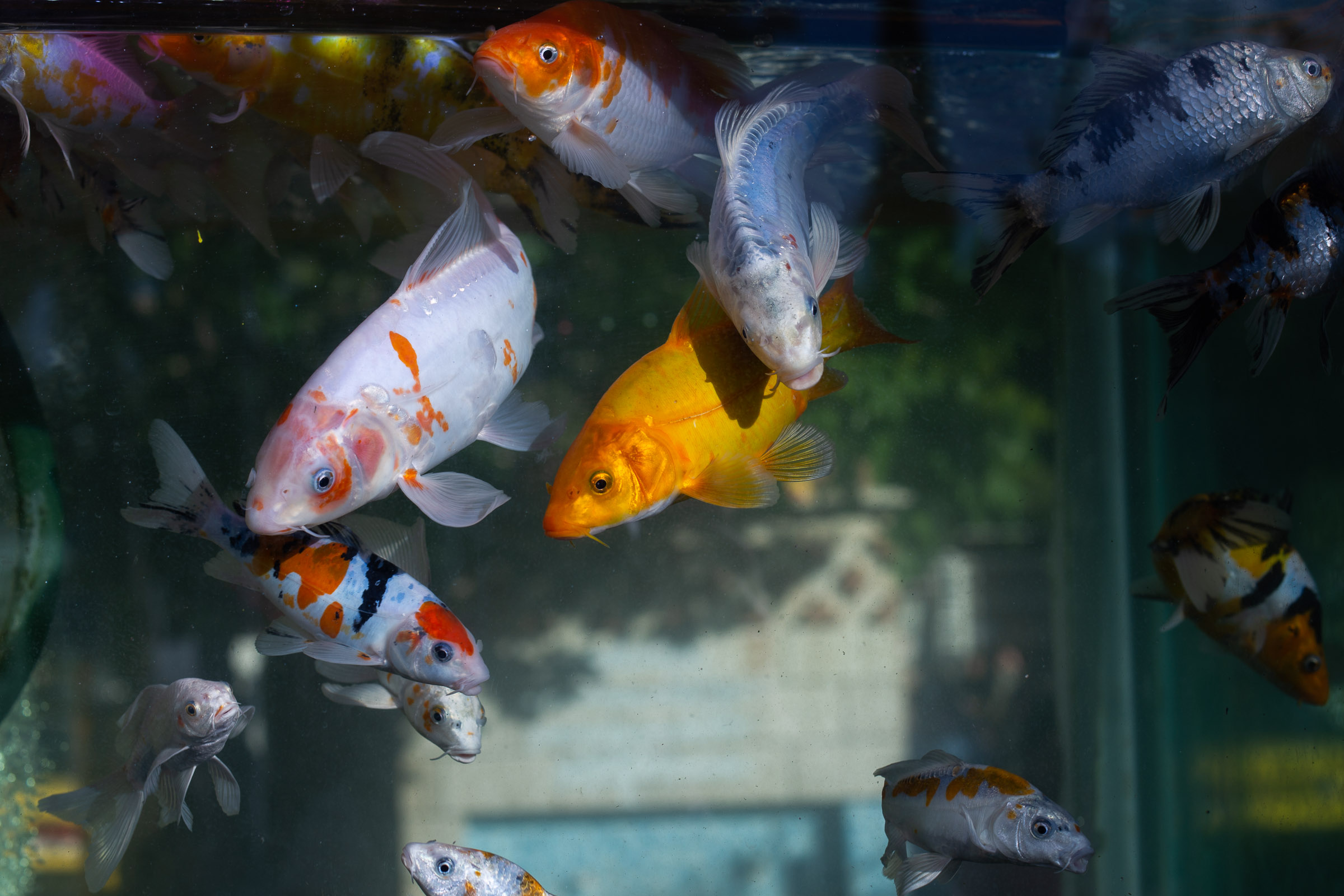
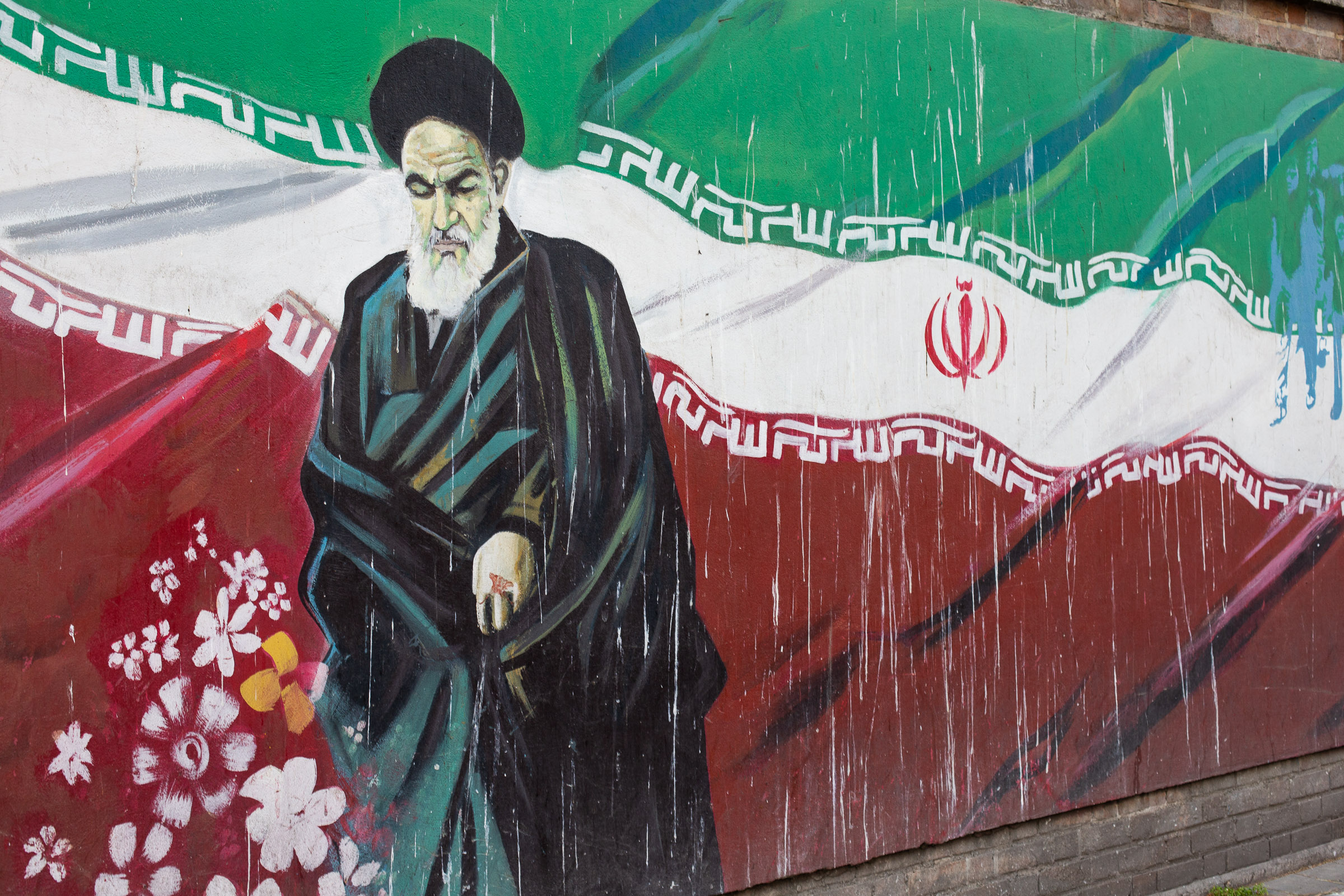
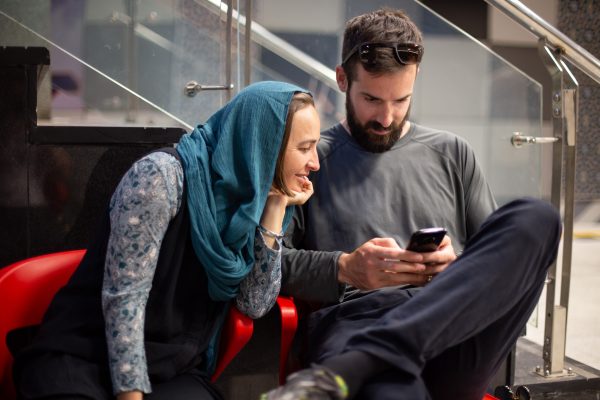
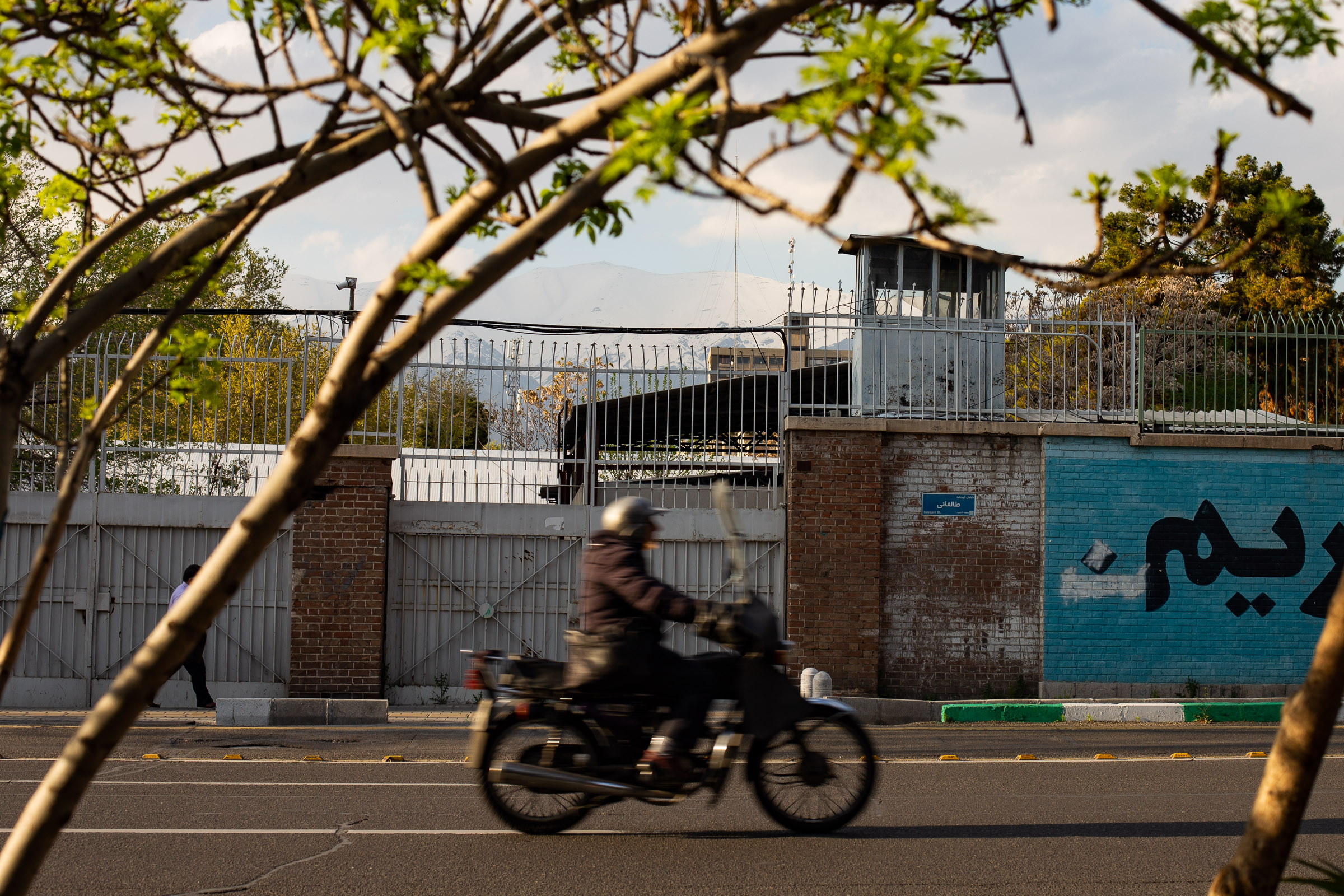
Leave a Reply